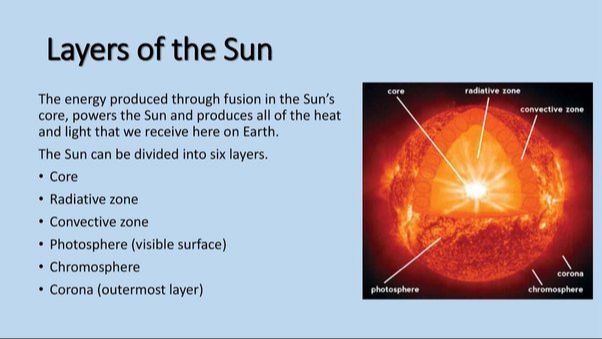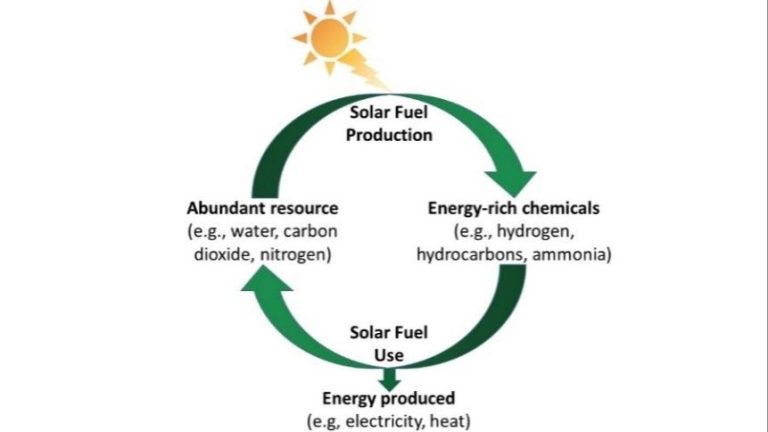Is Sunshine Radiant Heat?
What is Radiant Heat?
Radiant heat is a form of energy transfer through electromagnetic waves that travel through space. Unlike conductive or convective heat transfer, radiant heat can move heat energy across empty space and does not require direct contact between objects or a transport medium like air or water. Radiant heat transfer occurs when energy radiates out from a warm surface and is absorbed by cooler materials without warming the space in between.
Common examples of radiant heat sources include the sun, fires, stoves, heaters, and hot surfaces like asphalt on a sunny day. These objects radiate thermal radiation in the form of infrared waves that propagate through the air until they are absorbed by surrounding people, objects, and surfaces. This direct heating of objects rather than the heating of air in between is what makes radiant heat transfer unique and efficient for applications like space heating.
Radiant energy is emitted in all directions from a heat source and can be focused and redirected using reflective surfaces. Radiant heat panels and electric heaters take advantage of directed radiant heat to heat people and objects directly. The intensity of radiant heat decreases with the square of distance from the source, so proximity is important for efficient radiant heat transfer.
The Nature of Sunlight
Sunlight is produced by the nuclear fusion reactions occurring at the core of the sun. The reactions release enormous amounts of energy in the form of electromagnetic radiation. This radiant energy travels at the speed of light and reaches the Earth in about 8 minutes after being emitted by the sun.
Sunlight consists of a continuous spectrum of electromagnetic radiation, meaning it contains rays of all wavelengths. The dominant wavelengths determine the type of radiation. Visible sunlight that humans can see represents only a small portion of the spectrum from about 400 to 700 nanometers. Other parts of the solar spectrum include ultraviolet rays below 400 nm and infrared rays above 700 nm.
The different wavelengths of sunlight correspond to specific frequencies of the electromagnetic waves. The visible wavelengths have frequencies ranging from 430 to 790 terahertz. Higher frequency ultraviolet rays extend up to 30 PHz while lower frequency infrared rays are below 400 THz. The wide spectrum of solar radiation contains both ionizing and non-ionizing types of electromagnetic energy.
How Sunlight Reaches Earth
Sunlight travels an immense distance to reach Earth. From the sun’s surface, sunlight journeys around 93 million miles (150 million km) to arrive at our planet. This tremendous distance allows sunlight to spread out and disperse before entering Earth’s atmosphere.
As sunlight travels through the atmosphere, the different gases and particles scatter the rays in various directions. Some of this scattering causes sunlight to diffuse – spreading out the rays so they come from many directions, not just the direct path from the sun. This is why we experience daylight even when the sun is hidden behind clouds or objects. The scattered diffuse light still reaches us.
The sunlight that travels straight through the atmosphere without scattering is called direct beam radiation. Areas receiving more of this direct sunlight experience brighter illumination than areas receiving only the diffuse fraction. The ratio of direct to diffuse sunlight changes with the time of day, latitude, and atmospheric conditions.
Absorption of Sunlight

When sunlight reaches the Earth’s surface, different materials will absorb the solar energy at different rates depending on their physical properties. The ability of an object to absorb sunlight is a key factor in how the light energy gets transformed into thermal energy or heat.
The amount of solar radiation absorbed depends on two main characteristics – the material composition and the color of the object. Materials like asphalt, brick, concrete and metals readily conduct heat and will absorb a high percentage of sunlight as thermal energy. Other materials like wood, water and soil absorb less efficiently. Darker colored objects made from any material will absorb light and heat faster than lighter colored objects. That’s because dark colors have lower albedo meaning less sunlight gets reflected.
In summary, the rate at which various materials on Earth’s surface convert the Sun’s radiant light energy into heat energy depends on their specific physical properties and color. Understanding absorption rates helps explain why temperatures vary in different environments.
The Greenhouse Effect
The greenhouse effect refers to the trapping of heat in Earth’s atmosphere due to greenhouse gases. Greenhouse gases, such as carbon dioxide, methane, and water vapor, absorb infrared radiation emitted from Earth’s surface. This radiation, which would otherwise escape into space, gets absorbed and re-emitted in all directions by greenhouse gases. Some of this re-emitted radiation gets directed back to Earth’s surface, causing an overall increase in temperature.
Without the natural greenhouse effect, Earth’s average temperature would be around 0°F (−18°C) rather than the livable 59°F (15°C) it is today. However, human activities such as burning fossil fuels have increased the levels of greenhouse gases in the atmosphere. Since the Industrial Revolution began in the mid-1700s, the concentration of carbon dioxide has increased by over 40%. This enhancement of the greenhouse effect has contributed to 0.8°C of global warming over the past century.
Continued emissions of greenhouse gases from human activities are projected to lead to an additional 1-4°C of warming over the next century. This will likely cause damaging impacts including sea level rise, more extreme weather events, and disruptions to ecosystems. Mitigating climate change will require substantial reductions in greenhouse gas emissions as well as adaptation measures to deal with the expected changes.
Measuring Sunlight and Heat
There are a variety of tools used to measure sunlight and heat from the sun. Some common instruments include:
Tools for measuring sunlight:
Pyranometers: Used to measure solar irradiance or solar flux density on a surface. They typically measure watts per square meter or kilowatts per square meter.
Pyrheliometers: Used to measure direct beam solar irradiance, the amount of solar radiation received from the sun on a surface perpendicular to the sun’s rays.
Sunshine recorders: Track the number of hours of sunlight in a day. They use a glass sphere to focus sunlight and burn a trace onto a card.
Units of solar irradiance:
Some common units used to measure solar irradiance include:
- Watts per square meter (W/m2)
- Kilowatts per square meter (kW/m2)
- Langleys per unit time (typically per minute)
Thermometers and heat measurement:
Thermometers are used to measure temperature and detect heat. Common types include:
- Mercury thermometers
- Alcohol thermometers
- Digital thermometers
- Infrared thermometers
- Thermocouples
Temperature scales used include Fahrenheit, Celsius, and Kelvin. Heat flux sensors can also measure heat flow in watts per square meter.
Applications of Solar Radiant Heat
The radiant heat from sunlight has many practical applications that harness the sun’s thermal energy. Here are some of the main ways that solar radiation is used:
Examples of Solar Heating Systems
Solar thermal collectors are used to absorb sunlight and convert it into heat. This solar heat can then be used for hot water and space heating in homes, businesses, and industry. Solar water heating is one of the most common uses. Solar collectors are mounted on rooftops and the heated fluid is piped to a storage tank. In active systems, pumps circulate the fluid. In passive systems, circulation relies on natural convection.
Concentrated Solar Power
Concentrated solar power (CSP) systems use mirrors or lenses to focus sunlight onto a receiver, intensifying the heat. This thermal energy is then used to drive a heat engine, which turns a generator to produce electricity. CSP plants include parabolic troughs, solar towers, and solar dishes. CSP provides a renewable and sustainable method of electricity generation.
Passive Solar Heating in Buildings
Buildings can be designed to take advantage of solar gain through their windows, walls, and floors to provide space heating and reduce energy consumption. Passive solar design techniques include orienting windows to the south, adding thermal mass, and using various materials to help absorb, store, and distribute solar heat. Careful passive solar design can meet a significant portion of a building’s heating needs.
Health Effects of Solar Radiation
Sunlight provides many health benefits but overexposure can also pose risks. Ultraviolet (UV) radiation in sunlight has both positive and negative effects on human health.
Benefits of sunlight exposure include:
- Increased vitamin D production, important for bone health and immunity
- Improved mood through release of serotonin and endorphins
- Treatment of seasonal affective disorder (SAD) and depression
- Clearance of skin conditions like psoriasis, eczema, and acne
Risks of overexposure include:
- Sunburn, skin aging, and skin cancer
- Heat exhaustion or heat stroke
- Eye damage like cataracts
- Weakened immune system
UV radiation causes genetic mutations in skin cells, leading to skin cancer. Over 90% of skin cancers are associated with UV exposure. The risk depends on the amount and intensity of exposure, skin pigmentation, and individual factors.
Using sun protection like shade, sunscreen, hats, and clothing is crucial to reduce UV damage from overexposure to sunlight.
Is Sunlight Considered Radiant Heat?
Radiant heat is a form of electromagnetic radiation that transfers heat directly from a hot surface to a cooler surface without heating the air in between. It travels in a straight line and can be felt as warmth on the skin when absorbing radiant heat from a heat source like the sun or a fire.
Sunlight exhibits the defining qualities of radiant heat energy. It consists of electromagnetic waves that release energy when absorbed by an object. The sun produces a wide spectrum of electromagnetic radiation, including ultraviolet light, visible light, and infrared radiation. While ultraviolet light has shorter wavelengths and visible light enables us to see, infrared radiation from sunlight carries radiant heat energy with longer wavelengths.
When sunlight reaches the Earth’s surface, the ground, water, plants, buildings, and other objects absorb the infrared radiation, causing a transfer of heat directly to those surfaces. This is the greenhouse effect in action. The infrared energy converts to heat upon absorption instead of heating the air in between. Sunlight therefore acts as a major source of radiant heat for the Earth, enabling the surface and life forms to be warmed.
In summary, sunlight demonstrates the defining properties of radiant heat. It consists of electromagnetic waves that travel directly to surfaces which convert the radiation into warmth. This allows sunlight to heat the Earth without warming the air in between. Sunlight’s infrared radiation is therefore considered a form of radiant heat from the sun.
Conclusion
To summarize, sunlight exhibits the properties of radiant heat despite being a complex phenomenon. Radiant heat is thermal energy transmitted through electromagnetic waves. Sunlight consists of a spectrum of electromagnetic waves, including ultraviolet, visible light, and infrared radiation. These waves propagate through space and interact with matter on Earth in various ways. A portion of sunlight is absorbed by the surface as heat. This demonstrates sunlight’s capacity to transfer thermal energy as a form of radiant heat.
While sunlight has multiple components and effects, the infrared portion specifically meets the definition of radiant heat. Infrared radiation transmits thermal energy that is felt as heat when absorbed by objects. Greenhouse gases in the atmosphere trap this infrared radiation, contributing to the greenhouse effect that warms the planet. Additionally, technologies like solar water heaters rely on the radiant heating properties of sunlight.
Therefore, although sunlight has some traits that differentiate it from pure radiant heat sources, the infrared component does qualify sunshine as a form of radiant heat. When absorbed by objects on Earth’s surface, sunlight transfers thermal energy in the characteristic manner of radiant heat.





